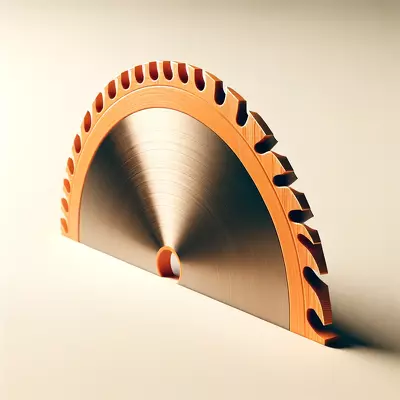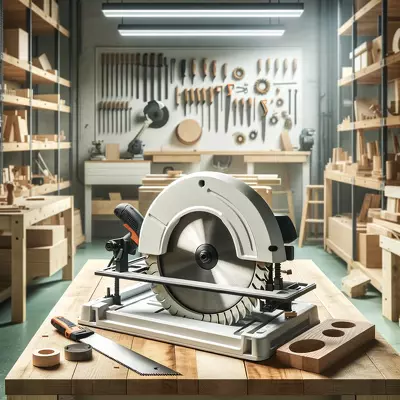Crafting Excellence: How to Choose the Best Band Saw Blades for Wood
Finding the right tools can make a world of difference in woodworking, and that’s especially true for band saw blades. These blades are crucial for precise cuts, shaping, and overall project success. Whether you’re a seasoned woodworker or just starting, knowing which band saw blades for wood are the best can save you time and improve your work.
I. Introduction
Crafting with wood demands precision, skill, and the right set of tools. Among these, the band saw blade stands as a key influencer of the quality of cuts, from the ease of operation to the final appearance of the project. This guide is your compass to selecting the finest blades for woodworking, ensuring your efforts yield beautiful and precise results.
II. Understanding Band Saw Blades for Woodworking
A. Types of Wood Band Saw Blades
Wood band saw blades come in a wide variety, each designed for specific tasks. From narrow blades for intricate cuts and curves to wider blades for straight, fast cuts, understanding the different types and their applications is crucial for any woodworker. Specialized blades, such as variable-tooth blades, provide a balance between speed and finish, making them versatile options for various projects.
B. Factors to Consider When Choosing a Blade
Selecting a blade is not just about matching it to the task at hand. It’s a decision that empowers you to enhance your woodworking experience. The material of the blade, tooth pattern, and width all contribute to its performance. For instance, bi-metal blades offer durability for frequent use, while carbon steel blades are suited for general cutting tasks. Considering the wood type and thickness will guide you in choosing the right blade to achieve clean, precise cuts, giving you the confidence to master your craft.
C. Maintenance Tips for Longevity
Proper maintenance is not just a task; it’s a responsibility that you, as a woodworker, have for your tools. It extends the life of band saw blades, ensuring they remain sharp and efficient. Regular cleaning to remove sap and resin buildup, along with periodic inspection for wear and damage, helps prevent premature blade failure. Storing blades correctly and using them within their intended capacity will also keep them in optimal condition, allowing you to take pride in the longevity and performance of your blades.
III. Top Picks for the Best Band Saw Blades for Wood
A. Review of the Timber Wolf Bandsaw Blade
- Features and Benefits
The Timber Wolf blade stands out for its low tension requirement, which reduces the band saw’s wear and makes it easier to achieve precise cuts. Its silicon steel construction and unique tooth geometry enhance performance, particularly in resawing tasks. - Ideal Use Cases
For those seeking a blade that excels in both resawing and intricate curve cutting, the Timber Wolf is a versatile choice. It’s a blade that can transform your projects, from furniture making to detailed decorative pieces. - User Feedback
Users have praised the Timber Wolf blade for its durability and the smooth finish it leaves on wood, noting a significant improvement in cut quality and a reduction in blade changes.
B. Analysis of the Lenox Tri-Master Carbide-Tipped Blade
- Features and Benefits
With its carbide-tipped teeth, the Lenox Tri-Master blade offers exceptional longevity and the ability to cut through the toughest woods with ease. Its high-performance capabilities are matched by a design that minimizes kerf waste, saving materials in the process. - Ideal Use Cases
Ideal for resawing and cutting dense hardwoods, this blade is a favorite among professionals who require precision and reliability for heavy-duty tasks. - User Feedback
Professional woodworkers frequently commend the blade’s long life and the clean, precise cuts it delivers, highlighting its efficiency in reducing material waste.
C. Evaluation of the Olson Saw All Pro Band Saw Blade
- Features and Benefits
The Olson Saw All Pro blade features a varied tooth pattern that reduces vibration, allowing for smoother cuts and improved control. Made from high-quality carbon steel, it strikes a balance between flexibility and durability. - Ideal Use Cases
This blade is well-suited for general woodworking tasks, including cutting curves and making joinery cuts. Its versatility makes it a great all-around blade for hobbyists and professionals alike. - User Feedback
Woodworkers appreciate the blade for its performance and value, noting its ease of use and the quality of its cuts, especially in thinner woods.
IV. FAQs
Q: How often should I replace my band saw blade?
A: It depends on usage and maintenance, but signs of dullness or damage indicate it’s time for a replacement.
Q: Can I sharpen band saw blades myself?
A: Yes, but it requires the right tools and expertise. Professional sharpening is recommended for high-quality blades.
Q: Are carbide-tipped blades worth the investment?
A: For heavy-duty or frequent use, especially with hardwoods, carbide-tipped blades offer superior longevity and performance, making them cost-effective in the long run.
Q: How do I choose the right blade width?
A: The width should be chosen based on the tightest curves you plan to cut; narrower blades for tighter curves and wider blades for straighter cuts.
Q: Can I use a wood band saw blade to cut metal?
A: No, cutting metal requires a blade designed specifically for metal as it has different tooth geometry and material properties.
Q: What causes band saw blades to break?
A: Common causes include excessive tension, improper blade selection for the task, or running the blade at too high a speed.
Q: How do I prevent my blade from rusting?
A: Keep the blade clean and dry, and consider applying a rust inhibitor if you store your saw in a humid environment.
V. Conclusion
A. Key Takeaways
Choosing the right band saw blade is essential for achieving clean, precise cuts in woodworking. By considering factors such as blade material, tooth pattern, and width, woodworkers can select a blade that best suits their project needs. Regular maintenance further ensures the blade’s longevity and performance.
B. Final Recommendations
Investing in high-quality blades, such as the Timber Wolf, Lenox Tri-Master, and Olson Saw All-Pro, assures you of the quality of work and efficiency you can achieve. By selecting the right blade for the task and providing proper care, you can enhance any woodworking project, knowing that your investment is worthwhile.
VI. Suggested Readings
Before diving into your next project, expanding your knowledge of woodworking tools and techniques can make a significant difference in your craft. Here are a few recommended readings that offer valuable insights:
- “The Complete Manual of Woodworking” by Albert Jackson and David Day: This comprehensive guide covers tools, techniques, and materials for beginners and experienced woodworkers alike.
- “Band Saw Fundamentals: How to Achieve Precision & Accuracy” by Mark Duginske: Duginske’s book is an excellent resource for mastering the band saw, offering tips on selecting blades, maintenance, and advanced techniques.
- “The Woodworker’s Guide to Furniture Design” by Garth Graves: For those interested in furniture making, Graves’ book provides essential information on design principles, material selection, and the role of tools in creating functional, beautiful pieces.
- “Woodworking Basics: Mastering the Essentials of Craftsmanship” by Peter Korn: Korn’s guide is perfect for beginners, with a focus on fundamental skills, tools, and projects to build a solid foundation in woodworking.
- “The Bandsaw Book” by Lonnie Bird: Bird’s book delves into the specifics of band saw use, offering detailed advice on choosing, tuning, and using band saws effectively for a variety of projects.
Enhancing your understanding of band saws and woodworking techniques through these readings will not only improve your skills but also enrich your enjoyment of the craft. As you grow in knowledge and experience, you’ll find that the right tools and techniques truly make all the difference in bringing your woodworking projects to life.







